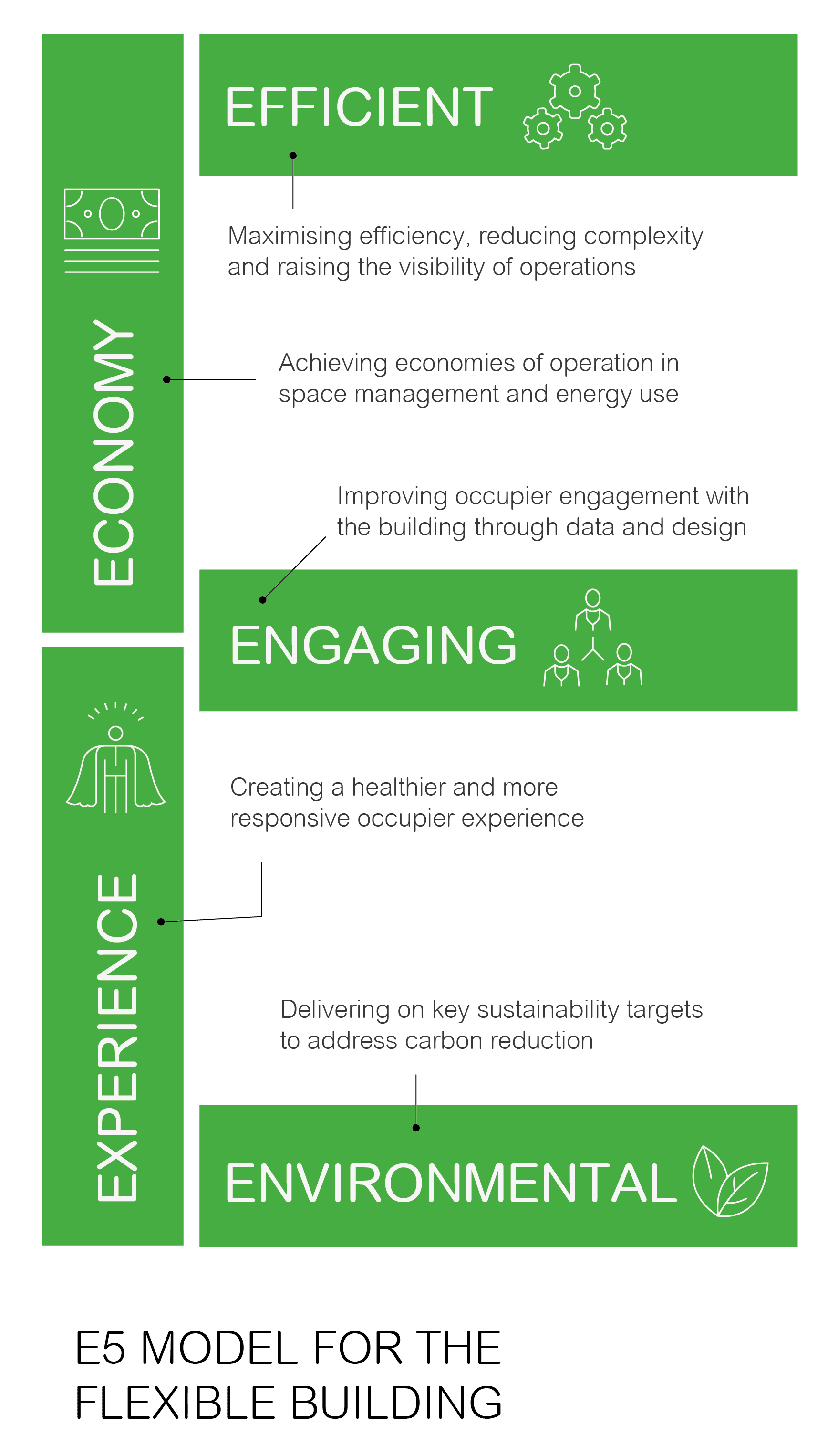The global pandemic has accelerated the trend to develop smart buildings that can generate environmental and occupancy data to inform better decision-making. It has also made employees appreciate the viability of remote working, with companies now preparing for a hybrid workplace model that requires more workplace flexibility in terms of space usage and building management.
Schneider Electric recently partnered with WORKTECH Academy to create a report on how flexible buildings can support a safer, more secure, and effective return to the office. In this post, I will highlight some of the key findings revealed about commercial real estate executives’ (CRE) operating priorities and new technology solutions.
What are the drivers for flexible buildings?
Flexibility is essential for future-ready, healthy, operationally efficient, and sustainable buildings. Whatever the ratio of remote and office-based work organizations decide upon, there will be more dynamic and fluid conditions to manage. Office buildings will need to become more flexible and resilient to change. Our survey of CREs found that navigating this new landscape requires an understanding of:
- Safety: People need to feel that they are in control of their environment and not exposed to overcrowded spaces or poor air quality. Expect more integration of touchless, voice-activated, and mobile access technologies.
- Employee experience: People missed in-person social interaction and opportunities to learn, but they want a more people-centric workplace. CRE professionals should expect more use of workplace apps
- Design innovation: Revamped workplace layout strategies may include reducing the number of solo desks, increasing collaboration zones, and more spaces becoming multi-functional to adapt to different needs at different times.
- Office as a platform: To support talent attraction and retention, it will be important to have open systems that ensure excellent connectivity and technical infrastructure that is resilient and adaptable.
- Operational efficiency: There is a growing willingness among large firms to invest in digital transformation if it will contribute to raising the visibility of operations and reducing costs.
- Learning from data: CRE leaders are looking to IoT sensors, data analytics, and AI to help proactively manage space, control energy costs, and improve employee engagement and occupant satisfaction.
- Sustainable goals: A sustainable approach to managing the office environment is high on the CRE agenda, especially in sectors where green financing and sustainable business models have become more prevalent.
E5 Model for flexible buildings
Our report presents a new outcome-based “E5 Model for the Flexible Building” to communicate what enhanced flexibility in the corporate office environment can achieve. The backbone of the model is a combination of Experience and Economy – these are twin goals identified by the CRE community. The benefits delivered to the market are described in greater detail by three values: Efficient, Engaging, and Environmental.

Adapting to needs while delivering comfort and efficiency
Beyond flexible leases, activity-based working strategies, and the flexible space market, the most common definition for flexible office buildings is making the infrastructures and spaces of the corporate building itself more flexible and adaptive in use.
For example, a building management system (BMS) will interpret a variety of inputs to help adjust various aspects of the internal environment: lighting, temperature, indoor air quality, and so on. Monitoring the flow of people can support decisions to automatically shut down floors or elevators to save on running costs during low occupancy. Such data can also support intelligent decisions about space utilization, helping more easily change physical space layouts and identify real estate savings.
An open, integrated BMS and new solutions leveraging AI and the IoT, such as Schneider Electric’s EcoStruxure™ Connected Room Solutions, are capable of integrating different systems and applications, adding new services, and being constantly upgraded so that occupier needs can be met as they evolve.
How do we achieve more flexible buildings?
Making buildings more flexible requires a change of mindset. It should not be viewed as a purely technical consideration, but as an amenity for a post-pandemic, fast-evolving, and more demanding workforce. It is important to think holistically about future space use and what new scenarios might arise when selecting any new system or technology. Data will play a critical role in driving more comfortable and responsive buildings for occupants.
To learn more, download the full report “Flexible buildings: Five elements to create buildings ready for the new world of work” or watch a webinar on the same topic, co-hosted with WORKTECH and featuring experts from Arup and EcoXpert™ partner, MTAIR.
 |
Schneider Electric has been recognized as the world’s most sustainable corporation in 2021 by Corporate Knights Global 100 Index. |




